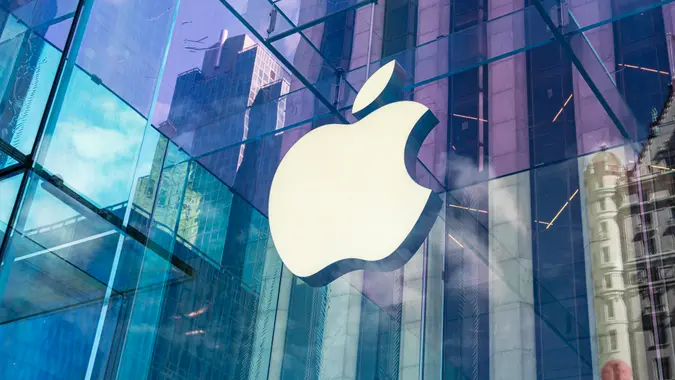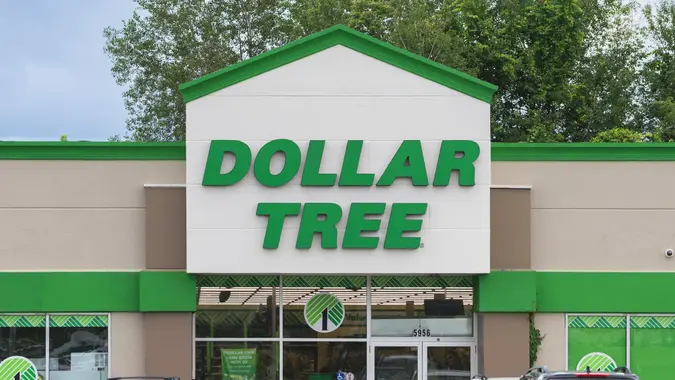5 Reasons Your Car Insurance Bill Is Getting More Expensive

Commitment to Our Readers
GOBankingRates' editorial team is committed to bringing you unbiased reviews and information. We use data-driven methodologies to evaluate financial products and services - our reviews and ratings are not influenced by advertisers. You can read more about our editorial guidelines and our products and services review methodology.

20 Years
Helping You Live Richer

Reviewed
by Experts

Trusted by
Millions of Readers
If you’ve noticed your car insurance costing more money over the past several years, it’s not your imagination. Since October 2020, the index for motor vehicle insurance jumped by 50.3%, according to Consumer Price Index tables from the U.S. Bureau of Labor Statistics (BLS). In the past year alone, that index is up by 16.3%.
What’s causing the surge in car insurance rates? There are several factors — and unfortunately, most of them are outside your control. However, there are some ways to save on your car insurance.
More Natural Disasters Topping $1 Billion
According to the National Centers for Environmental Information, there were 28 severe weather events in 2023, causing over $1 billion in damages. In 2022, there were 18 such storms, and in 2021, there were 20. Compare those numbers to 2015, when there were 10 natural disasters with damages exceeding $1 billion. And if you go back even further to 2007, there were just five.
The increase in natural disasters spills over to insurance companies, which pay out claims for weather-related damage to cars. A spike in claims correlates directly to rising premiums.
A Jump in Traffic Fatalities
The COVID-19 pandemic lockdowns meant fewer drivers on the road. However, as the lockdowns ceased, driving fatalities jumped. Between 2020 and 2022, driving deaths increased by 18.1%, according to the National Highway Traffic Safety Administration. Fatalities fell slightly over the past two years but are close to 41,000 annually. That’s a yearly gain of 8,000 deaths since 2013, when they averaged 33,000.
The reason behind the upsurge in driving deaths isn’t clear, but one thing is — insurance companies are paying more in compensation to injured drivers and passengers. And when someone dies in a car accident, there’s a much higher chance the case ends up in litigation, boosting payouts.
Fewer Car Repair Technicians
What happens when your car needs fixing after a collision? It likely goes to the repair shop, where technicians restore its appearance and damaged parts. But body shops are finding it harder to find talented workers. In 2023, there were nearly 5,500 unfilled collision tech jobs, according to TechForce Foundation. That trend may continue for the next few years, unless the tide turns and more people decide to embark on mechanic and collision tech careers.
To make up for the imbalance of available workers, some repair shops offer better pay and perks to new hires. However, that increases the shop’s overhead, and some of those costs get passed to insurance companies.
Rising Costs for Vehicle Parts
Today’s cars contain more electronics and specialty parts than older vehicles. For instance, newer cars often come with easily damaged rear-view cameras and parking sensors. Those parts may cost hundreds or even thousands of dollars to replace, PBS News reported — and that’s on top of fixing bodywork.
According to the BLS, vehicle part prices increased 6.5% since September 2020. While the increase is far less than the overall change in insurance costs, it’s a contributing factor to rising premiums.
A Climate of Higher Interest Rates
Insurance companies expect to pay out claims for some of their clients. But insurers hedge their risk of excessive claims by buying insurance from other providers, a practice known as reinsurance. That way, if the insurance company encounters a wave of pricey claims from an extreme event, like a hurricane, it can file for reimbursement from its reinsurance provider to reduce its losses.
However, over the past few years, reinsurers have raised premiums, too — partly to accommodate for less capital due to higher interest rates, The Wall Street Journal reported. While the Fed knocked its benchmark rate by 50 basis points in September 2024, experts don’t expect reinsurance rates to fall next year. According to a Fitch Ratings Industry Outlook report, reinsurers plan to keep policy covers strict and prices high to reduce their exposure to natural disaster claims.
How To Keep Car Insurance Rates Low
There are reasons behind the surge in auto insurance premiums, but most are outside the average consumer’s control. What you can do is monitor your insurance premium costs and be willing to shop around if they get too expensive. Sometimes, changing insurers can yield savings, keeping premiums within your budget.
When you’re considering a new insurance company, look into its discount policy. Most insurers list available savings within their website, so a quick search can tell you what you may qualify for. Make sure to ask the insurer to apply the savings to your quote before committing to a new policy.
You may also enroll in a safe driving course. Some insurers reward clients with lower premiums after completing a class. Even if your provider doesn’t, a course can refresh your driving skills, potentially reducing your risk of tickets and accidents.
More From GOBankingRates
- Nearly 1 in 3 Americans Hit by a Costly Holiday Scam, Norton Survey Shows -- How To Avoid This
- Here's What the Average Social Security Payment Will Be in Winter 2025
- How Middle-Class Earners Are Quietly Becoming Millionaires -- and How You Can, Too
- The Easiest Way to Score $250 for Things You Already Do
 Written by
Written by  Edited by
Edited by 
























